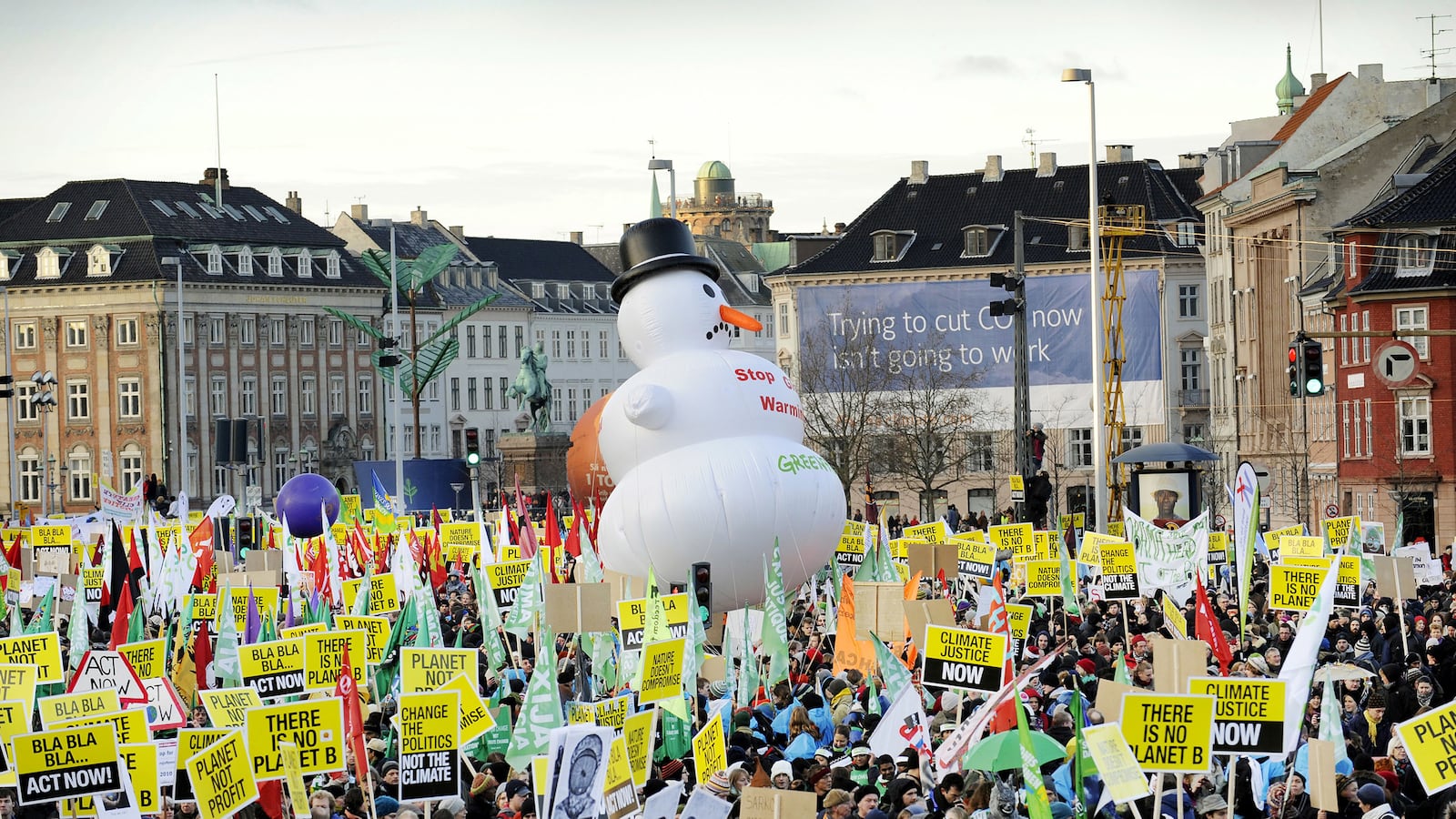Up to 100,000 people are expected to participate in today’s People’s Climate March in New York City, which would make it the largest environmental march in world history, topping a Copenhagen rally in 2009. But the most significant strategic accomplishment of the march may have absolutely nothing to do with what happens at the event itself. Instead, the groundbreaking significance of the march has to do with the planning that went into it, as the historically divided factions of the environmental field have come together in an unprecedented way.
For decades, there have effectively been two strands within the environmental movement in the United States and worldwide. One is focused on policy. The other is focused on organizing and action. The former emphasizes pressing conservation and energy law reforms. The latter concentrates on stopping incinerators and mountain-top removal mining and other local environmental fights. One is fairly top-down and predominantly white-led. The other is mainly bottom-up and rooted in communities of color. One gets at least 85 percent of all U.S. foundation funding. The other gets the crumbs—and I bet you can guess which.
The tensions between these factions have burned hot and long. Many of the so-called “big greens” see the grassroots organizing sector as a marginal player with marginal leaders working on marginal issues, and condescend to them accordingly. The grassroots groups see the big greens as tepid reformers who don’t have a deep analysis of the causes of climate change and lack the appetite let alone capacity for building people power to topple the status quo. In a coordinated and functional movement ecosystem, there’s a need for both top-down advocacy and bottom-up base building. But the environmental movement has not been coordinating and functioning.
What it has been doing is losing. According to polls, in spite of all the efforts around misinformation to the contrary, the majority of Americans believe climate change is a serious problem and one caused by the actions of us humans. And yet as a political priority, Americans rank addressing climate change as less important than, say, immigration reform and gun control — which aren’t exactly breezing through Congress either. Meanwhile even tepid and questionably strategic national reforms like cap-and-trade that once seemed a bipartisan inevitability have now fizzled.
But at the grassroots level, there have been victories — from stopping mining in Bristol Bay, Alaska, to holding off the Keystone XL pipeline in the Midwest, not to mention communities across the country that are demonstrating “just transition” alternatives. In other words, that which the big greens had been dismissing for so long was exactly what they needed — bottom-up people power building the pressure for change.
If you haven’t done it, trust me when I say that organizing a big event with others is a bonding experience, and when people talk about movements as “networks,” that’s just a fancy word for relationships. Mass movements by definition have mass scale but they’re held together by the core of tight relationships in the middle. The newly formed Climate Justice Alliance, a coalition of grassroots environmental justice groups, wanted to do some kind of mobilization around the UN Climate Summit. The national group 350.org, founded by Bill McKibben and others, saw the need for more base-building around climate issues and wanted to do something with the Climate Justice Alliance. The idea for the People’s Climate March was born.
But instead of communities and organizations of color being relegated to tokenistic window dressing, as is too often the case across many parts of the progressive movement, the Climate Justice Alliance members didn’t just get a seat at the table, they set the table. Re-imagined it, even. “Early on, representatives from the Climate Justice Alliance introduced the Jemez Principles,” said Cindy Weisner, national coordinator of the Grassroots Global Justice Alliance. The Jemez Principles of democratic organizing were created by grassroots communities of color and put inclusion and equal participation in the organizing process ahead of mere transactional efficiency—in other words, a huge departure for the big greens that are used to transactional efficiency.
And it has had a concrete effect, again not just in terms of appearances but outcomes. Unlike a Sierra Club and 350.org march in February 2013 that was criticized for being overwhelmingly white, the People’s Climate March is expected to be not only be more diverse throughout; but also, the flow of the march is organized to prioritize the voices of directly affected communities — those at the frontlines of climate change but so often left out of national environmental advocacy.
So whether there are 10 or 10,000, the fact that frontline communities will be leading the People’s Climate March is a radical accomplishment in and of itself. And after hard back-and-forth negotiations, the official spokespeople for the climate march are not national executive directors or even Leonardo DiCaprio, but all frontline leaders from directly affected communities, most of whom are people of color. To anyone who knows this field, this is a big deal.
It’s just a start. The big greens “have to shift the way they do business, from being large top-down institutions to being accountable to democratic bases and practicing democratic decision-making,” said Ananda Lee Tan, representing the Climate Justice Alliance as a lead organizer behind the march. There are also still political rifts; the grassroots groups oppose big green support for corporate-backed cap-and-trade, and the big green groups refused to officially support the Flood Wall Street action the day after the march that will connect climate change with structural inequalities in capitalism.
These rifts may not be resolved any time soon. But for the first time in recent memory, grassroots organizations have been equal partners at the table with national groups, working in coordination, cross-racially, to organize a massive event. Whatever the outcome of the march, this process — and the relationships built as a result — will hopefully transform and strengthen the movement for the future.






